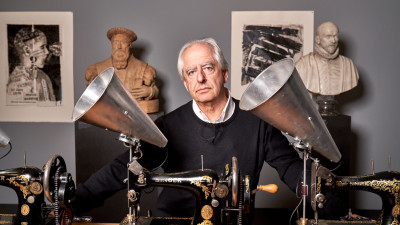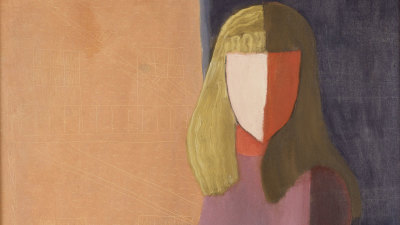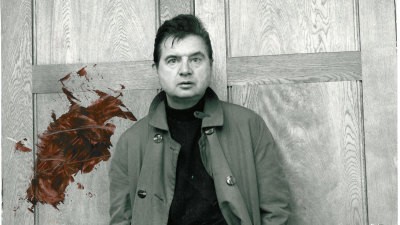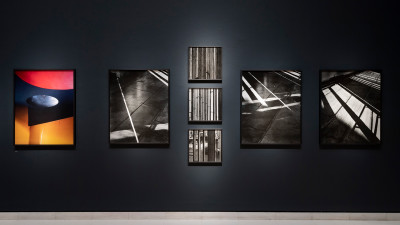James Ensor: a beginner’s guide
James Ensor: a beginner’s guide
By Tom Jeffreys
Published 29 September 2015
In 2016 the RA celebrates the life and work of James Ensor, whose macabre paintings of crowds and carnivals made him one of Belgium’s most prominent artists of the early twentieth century.
-
This is the first major UK exhibition of Ensor’s work in nearly 20 years, so for those unfamiliar with his work, here are five key facts to help you get to grips with this singular artist.
James Ensor was one of Belgium’s most celebrated artists
Born in Ostend in northwest Belgium in 1860, Ensor left school at fifteen to begin his artistic training before attending the Académie Royale des Beaux-Arts in Brussels. From 1880 until 1917, he had his studio in the attic of his parents’ house. His early works were characterised by a solemn realism, but his paintings quickly became brighter and much more bizarre. Ensor’s reputation bloomed through the first decades of the twentieth century, so much so that in 1929 he was made a baron by King Albert I of Belgium, and then in 1933 he was awarded the prestigious Legion d’honneur. Ironically, by the time such recognition arrived, Ensor’s visionary inventiveness had begun to fade and he was painting much less frequently.
-

James Ensor, The Skeleton Painter, 1896.
Oil on panel. 37.3 x 45.3 cm. Koninklijk Museum voor Schone Kunsten, Antwerp, inv. 3112 Photo KMSKA © www.lukasweb.be - Art in Flanders vzw. Photography: Hugo Maertens / © DACS 2016.
-
He produced his best work before he turned 40
Today, it is for his work of the 1880s and ‘90s that Ensor is chiefly celebrated. During this period of intensive activity, Ensor pushed back against the strictures of his academic training, producing works of bewildering imaginative vision. Demons and evil spirits, carnivals of masked figures, self-portraits as a skeleton: Ensor’s work of this period was simultaneously wry and aggressive, dark and satirical, scandalous and hugely influential. The exhibition at the RA is therefore not a wide-ranging survey, but a focused examination of this extraordinary period in Ensor’s career. As senior curator Adrian Locke observes: “the Sackler Galleries lend themselves to focused exhibitions of this nature. It’s an elegant space in which to present an artist like Ensor in a thorough, concentrated way.”
-

James Ensor, Skeletons Fighting over a Pickled Herring, 1891.

James Ensor, The Skate, 1892.
-
His range was remarkable
Although best known now for his scenes of strange skeleton figures, Ensor’s work encompassed a wide range of genres and moods: from landscape and seascape to satire and social commentary. Between 1888 and 1892, he turned his attention to religious themes – especially the sufferings of Christ. His vast canvas Christ’s Entry into Brussels in 1889 (1888) depicts Jesus on horseback, almost lost among a crowd of masked figures, including Belgian politicians, figures from history, and members of Ensor’s own family. It is widely considered his masterpiece.
Ensor excelled in many media
Ensor was not only a painter of consummate technical ability, but a skilful printmaker and draughtsman too. In 1888 alone, in addition to the vast Christ’s Entry… Ensor also produced no less than 45 etchings. In My Portrait in 1960, made during that year of prodigious productivity, the artist imagines himself as a reclining skeleton over 70 years later. In the foreground, an oversized spider is the only sign of life. As Locke says: “Ensor’s skill as a painter, etcher and draughtsman is extraordinary. His work is quite magical. It’s like looking through a portal onto another world.”
-
His work is quite magical. It’s like looking through a portal onto another world.
Curator Adrian Locke
-
Ensor is almost impossible to categorise
Ensor’s singular imagination, creativity and humour make him a very difficult artist to categorise. Various critics have identified influences as diverse as Blake, Hogarth, Goya and Manet. As an experimental artist, he trod his own path, and never fitted obviously into any one art historical movement. But he was deeply engaged with the art and culture of the period: he was a founding member of artistic group Les XX, which organised exhibitions involving the likes of Gauguin, Cézanne and van Gogh. The group also hosted lectures by French symbolist poets Stéphane Mallarmé and Paul Verlaine, and concerts of recently composed music by Debussy and Fauré.
Ensor is an artists’ artist
“Ensor was highly technically accomplished,” says Adrian Locke, “as well as successful, and much admired by many different artists.” To reflect this aspect of Ensor’s reception among his fellows, the RA has enlisted one of Belgium’s leading artists, Luc Tuymans, to curate the exhibition. Trivia fans might like to know that Ensor’s influence has not been confined to the visual arts: in 1994, Brooklyn alt-rockers They Might Be Giants released ‘Meet James Ensor’, a track which celebrated the idiosyncrasy of the artist’s life and work.
James Ensor is in The Sackler Wing of Galleries at the RA from 29 October 2016 – 29 January 2017.
Tom Jeffreys (@tomjeffreys) is a writer, editor and curator.






